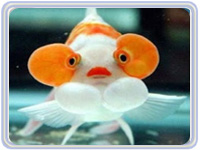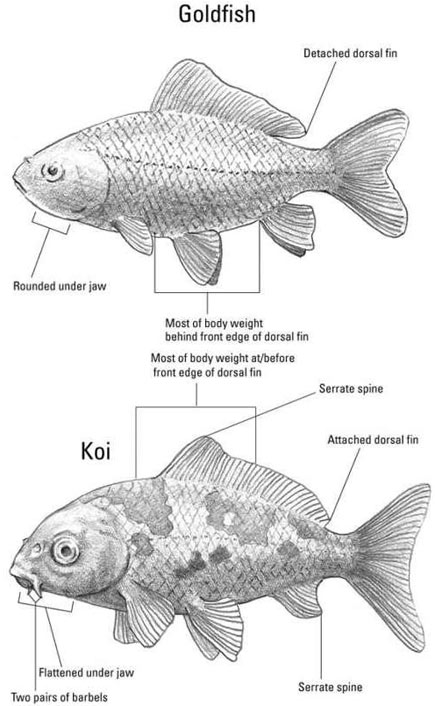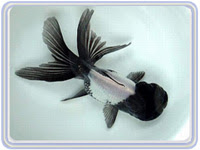GALLERY IKAN MAS KOKI
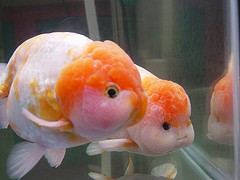









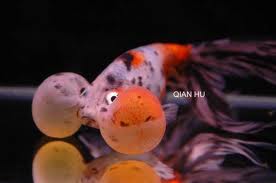

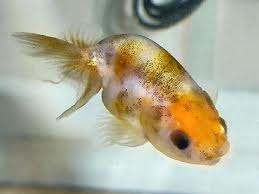

















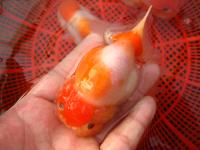


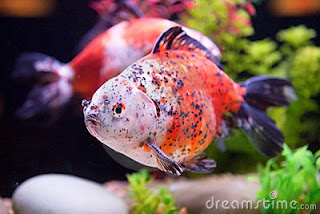









Cara Pemijahkan Ikan Mas Koki
Untuk menghasilkan anakan ikan Mas Koki yang baik diperlukan pemilihan indukan ikan Mas Koki yang baik pula. Indukan paing tidak sudah berusia 8 bulan dan sudah matang gonad. Indukan yang dipilih adalah ikan Mas Koki yang memiliki kepala kecil dengan tubuh bulat, sisik utuh dan tersusun rapih. Jika ikan sedang bergerak, ekor dan sirip akan kelihatan tegak.
Perbedaan jantan dan betina Induk Jantan Induk Betina Pada sirip dada terdapat bintik-bintik bulat menonjol dan jika diraba terasa kasar. Pada sirip dada terdapat bintik-bintik dan terasa halus jika diraba.
Induk yang telah matang jika diurut pelan kerarah lubang genital akan keluar cairan berwarna putih Jika diurut, keluar cairan kuning bening. Pada induk yang telah matang, perut terasa lembek dan lubang genital kemerah-merahan.
Pemijahan ikan mas Koki bisa dilakukan di akuarium, kolam semen atau bak fiber. Pertama kali kolam pemijahan diisi dengan air dan diendapkan kurang lebih selama 24 jam. Masukkan media untuk bertelur berupa tanaman enceng gondok. Selanjutnya masukkan Indukan Ikan Mas Koki yang sudah dipilih pada sore hari.
Proses pemijahan ikan Mas Koki akan berlangsung pada malam hari. Pada pagi hari lihat pada akar tanaman enceng gondokm dan perhatikan perubahan perut ikan Mas Koki Betina. Jika pada enceng gondok sudah terdapat telur maka segera angkat indukan ikan mas koki untuk dipindahkan ke kolam/akuarium lain. Tunggu 2-3 hari untuk telur ikan mas Koki menetas dengan sendirinya. Setelah menetas lakukan pemeliharaan seperti langkah di atas. Selamat Mencoba.
PEMIJAHAN
1) Pemilihan induk
a. Induk yang baik untuk dipijahkan sudah berumur + 8 bulan, dengan ukuran minimum sebesar telur itik.
b. Pilih induk yang berkepala kecil dengan tubuh bulat, sisik utuh dan tersusun rapih. Jika ikan sedang bergerak, ekor dan sirip akan kelihatan tegak.
c. Untuk mendapatkan keturunan yang berwarna, maka calon induk yang akan dipijahkan berwarna polos. Gunakan induk jantan berwarna putih dan betina berwarna hitam atau hijau lumut atau sebaliknya.
2) Perbedaan jantan dan betin Induk Jantan Induk Betina Pada sirip dada terdapat bintik-bintik bulat menonjol dan jika diraba terasa kasar.
Induk yang telah matang jika diurut pelan kerarah lubang genital akan keluar cairan berwarna putih
Pada sirip dada terdapat bintik-bintik dan terasa halus jika diraba. Jika diurut, keluar cairan kuning bening. Pada induk yang telah matang, perut terasa lembek dan lubang genital kemerah-merahan.
3) Cara pemijahana.
Bak/aquarium yang telah bersih diisi dengan air yang telah diendapkan + 24 jam, kemudian letakkan eceng gondok untuk melekatkan telurnya.
b. Pilihlah induk yang telah matang telur, masukkan kedalam bak pada sore hari. Bila pemilihan induk dilakukan dengan cermat, biasanya keesokan harinya telur sudah menempel pada akar eceng gondok.
c. Karena telur tidak perlu dierami, induk dapat segera dipindahkan ke kolam penampungan induk, untuk menunggu sampai saat pemijahan berikutnya. Jika perawatannya baik, maka 3 ~ 4 minggu kemudian induk sudah dapat dipijahkan kembali.
Ikan mas koki dan cara peternakan koki dan budidaya koki serta
memilih koki koki unggulan dan cara penangkaran ikan mas koki mencari
calon bibit unggul ikan mas koki dan asal usul ikan mas koki di dunia.
Inilah koki atau goldfist jenis baru hasil dari penangkaran koki di indonesia.
Jenis koki ini hasil kawin silang antara koki Mutiara dengan Koki Jambul
Koki
jenis kedua, adalah koki hasil budidaya baru mendapatkan proses kawin
silang yg baik, ini adalah hasil perkawinan dua koki mata balon /
goldfish bubble, dengan hasil yang indah.




